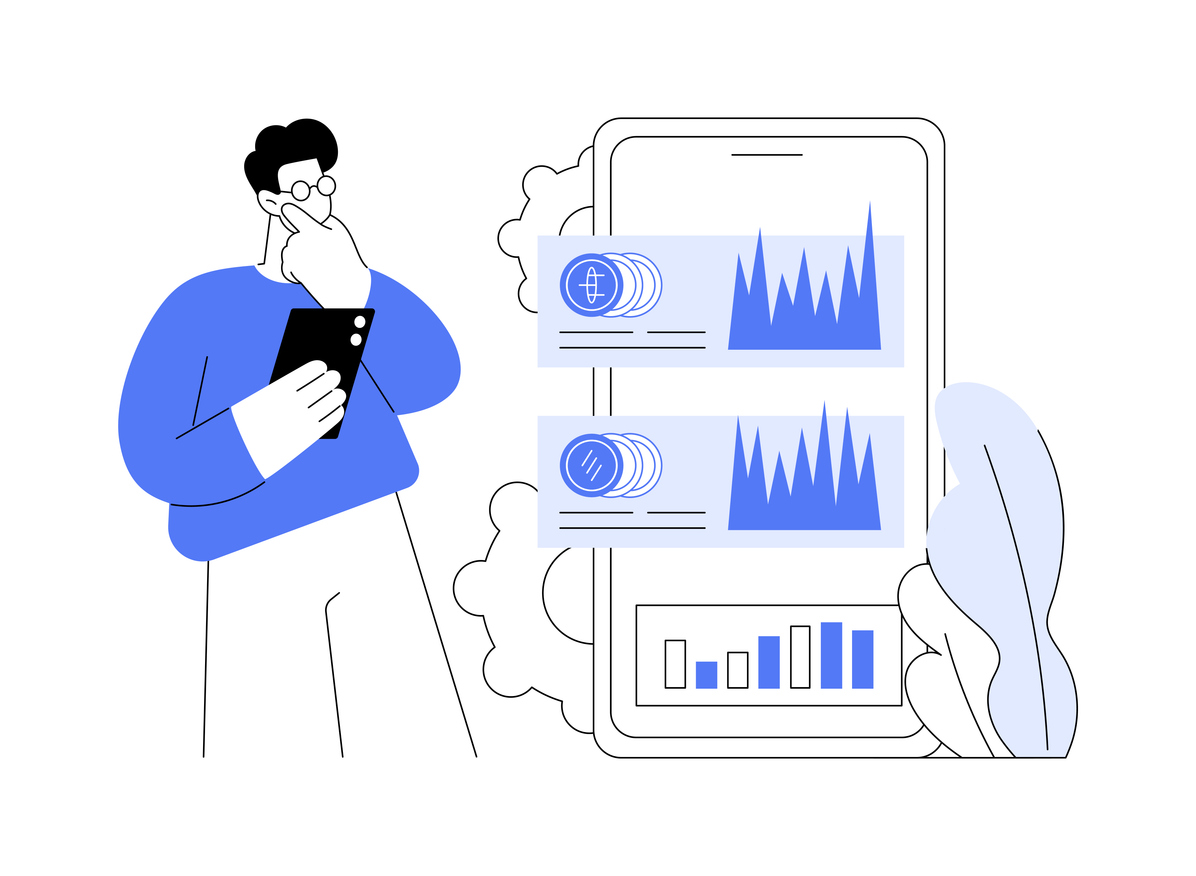Unlock the Power of Text Marketing Analytics
Key Highlights
- Text marketing analytics leverages the power of natural language processing (NLP) to extract valuable insights from unstructured text data, including customer messages and reviews.
- By understanding customer sentiment, businesses can tailor their marketing messages, improve customer engagement, and make better-informed decisions.
- Businesses can optimize their text marketing campaigns to achieve higher open rates, response rates, and conversion rates by analyzing key performance metrics.
- Advanced text analytics techniques, such as sentiment analysis and predictive analytics, offer deeper insights into customer behavior and preferences.
- Integrating text marketing analytics with other data sources like CRM systems unlocks the potential for highly personalized and effective marketing campaigns.

Introduction
In today 's digital world, knowing how customers behave is very important for successful marketing. Text marketing is a strong tool that helps reach customers directly. It plays a big role in this understanding. This is where text marketing analytics is helpful. By using marketing analytics with text messaging, businesses can gain meaningful insights from customer conversations. They can then adjust their strategies based on what they learn.
The Importance of Text Marketing Analytics in Today 's Digital Landscape
450digital world is always changing. Businesses are trying hard to get noticed by careful consumers. In this setting, text marketing has become a helpful way to communicate directly. Still, just sending messages is not enough.To really use text marketing well, businesses must look at the data from these messages. This is where text marketing analytics becomes very important. By studying things like how many people open messages, how many reply, and what customers say in their responses, businesses can learn more about their audience. This helps them improve their strategies to be more effective.
Understanding the Role of Text Marketing Analytics
Text marketing analytics is about using marketing analysis methods on text data. This includes SMS messages, customer reviews, and social media interactions. By using text analysis, businesses can find useful insights from a lot of unstructured data.
In text analysis, patterns can show us what customers prefer, how they feel, and what they might buy. These insights are important for businesses that want to make their marketing work better. When companies understand how customers react to different messages, offers, and calls to action, they can create better campaigns that get more response.

The Impact of Text Marketing on Consumer Behavior
Text marketing, especially SMS marketing, has a special role in affecting how people make choices. It is different from email and social media because it sends messages straight to the customer. These messages are quick and go to devices that people often keep close. This quickness and closeness help create strong channels for shaping opinions and causing actions.
SMS marketing naturally makes people feel a sense of urgency and that they are getting something special. Offers that last a short time, personalized discounts, and reminders sent by SMS play into what customers want. They like quick rewards and special experiences. This direct way of talking can really affect buying decisions.
Also, SMS marketing allows companies to get important information about what customers like and how they respond. This feedback helps them adjust their marketing plans to match what they see in customer behavior. In the end, this creates a more interesting and satisfying customer experience.
The main aim of text marketing analytics is to change raw data into useful insights. It focuses not just on how many messages were sent, but on what really connects with customers. This can help improve campaign performance and build stronger customer bonds.
Key Metrics in Text Marketing Analytics
In text marketing analytics, some important metrics help measure campaign success. By watching these metrics closely, businesses can see how well they are doing and where they can improve.
Key metrics include open rates. This shows the percentage of people who opened a text message. Response rates measure how many recipients replied to a call to action. Conversion rates are also important. They show the percentage of people who took a desired action, like making a purchase or signing up for a service.
Open Rate and Response Rate Analysis
Open rates and response rates are fundamental metrics in evaluating the effectiveness of text campaigns. A high open rate indicates that your message subject line resonates with your audience, prompting them to open the message. However, a low open rate suggests a need to revisit your messaging or timing.
Equally crucial is the response rate. It measures the percentage of recipients who engaged with your call to action, whether by replying to your message, clicking a link, or making a purchase. A strong response rate reflects the compelling nature of your offer and the clarity of your message.
Monitoring these metrics over time allows for data-driven optimization of your text campaigns. By experimenting with different messaging, calls to action, and sending times, you can identify the most effective strategies for maximizing engagement and achieving your campaign goals.
|
Metric |
Description |
|
Open Rate |
The percentage of recipients who opened your text message. |
|
Response Rate |
The percentage of recipients who replied to your message or completed a desired call to action. |
Conversion Rates from Text Marketing Campaigns
Conversion rates are very important for checking how well your text messaging efforts work. They show how good your text campaigns are at getting people to take actions you want, like making a purchase, signing up, or visiting your website.
The great thing about text messaging as a marketing channel is that it can drive fast responses. When you track conversion rates, you learn which messages and offers work best for your audience. This helps you to target better, personalize your messages, and improve your campaigns to get more conversions.
Keeping an eye on conversion rates helps you adjust your campaigns quickly. If you see that a specific message or offer has high conversion rates, you can make the most of that success. If a campaign is not doing well, you can look at the data, find what needs to change, and try new strategies.
Strategies for Optimizing Your Text Marketing Campaigns
Optimizing your text marketing campaigns is a process that keeps changing as you learn more from data analysis and customer insights. It 's important to know what your audience likes. You can then change your methods to boost engagement and increase conversions.
A great way to improve your campaigns is to personalize your messages. This means dividing your audience based on things like age, buying history, or interests. Then, you can adapt your messages to fit their needs and preferences better.
Segmenting Your Audience for Targeted Messaging
Market segmentation is key for good text marketing. It means breaking your contact list into smaller groups based on common traits. This way, you can send messages that match the needs and interests of each group. This leads to better engagement and more people taking action.
SMS analytics is important for successful market segmentation. By looking at customer information, like age, purchase history, interests, and past responses to campaigns, you can find customers with similar traits. This helps you send the right message to the right person at the right time.
Here are some ways to divide your audience for focused messaging:
- Demographics: Age, gender, location, job.
- Purchase history: Previous buys, how often they buy, average spending per order.
- Interests: Products or services they like, hobbies, lifestyle.
- Engagement: Response rates, open rates, click rates from past campaigns.

Crafting Compelling Messages that Drive Action
In the world of text marketing, it is important to create messages that connect with your audience. Good SMS messages should grab attention quickly, provide clear value, and encourage action.
To do this, personalize your messages. Use the recipient 's name or mention what they bought before. This shows you care and helps build a connection. Also, include strong calls to action. Clearly tell them what you want them to do and create a sense of urgency.
Additionally, think about adding visuals to your SMS marketing approach. You can use an eye-catching image, a fun GIF, or a simple infographic. Visuals can make your message better. They can make it stand out and increase the chances of getting noticed in busy inboxes.
Advanced Text Marketing Analytics Techniques
As businesses gather lots of text data from different places, they need better ways to analyze it. Advanced methods can help understand customer feelings, reasons, and future actions.
Two advanced techniques are sentiment analysis and predictive analytics. Sentiment analysis looks at the feelings and opinions in text data. This gives insights into customer satisfaction, how people see a brand, and how they react to marketing campaigns. Predictive analytics uses past data to predict future trends. This helps businesses know customer needs and improve their campaigns in advance.
Sentiment Analysis to Gauge Customer Response
Sentiment analysis is an important tool in natural language processing (NLP). It helps businesses go beyond just knowing what customers say in their feedback. It helps them figure out why customers feel that way. By checking the emotional tone and opinions in customer messages, reviews, or social media posts, companies learn a lot about customer sentiment.
Text mining techniques help in sentiment analysis. They allow algorithms to go through large amounts of unstructured text data. These algorithms then label the sentiment as positive, negative, or neutral. This kind of analysis gives useful insights into how customers feel about their experience.
The uses of sentiment analysis are wide-ranging. Companies can watch customer sentiment over time. They can spot potential problems before they become bigger issues. They can also check the overall health of their brand. Additionally, sentiment analysis helps businesses understand how well their marketing campaigns are doing. This way, they can improve their messages and target the right people, leading to better customer engagement and satisfaction.

Predictive Analytics for Future Campaign Planning
Predictive analytics is a part of data science that helps businesses look into the future. It allows them to see future trends and how customers might act, all by using past data. With machine learning algorithms, businesses can find patterns and guess what will happen next. This helps them make smart, data-based choices in their text marketing efforts.
There are many ways predictive analytics can be used in text marketing. Businesses can predict when customers might stop using their services. They can find out which customers might be valuable. They can also create tailored marketing messages that fit customers 'likely preferences. By knowing how likely it is for something to happen, like a customer buying a product or replying to an offer, businesses can adjust their messaging, timing, and audience for the best results.
Using predictive analytics helps businesses shift from simply reacting to customers to actively meeting their needs. By guessing what customers want and changing their marketing based on these insights, businesses can keep up with trends, improve their marketing work, and create long-lasting success.
Integrating Text Marketing Analytics with Other Data Sources
The real strength of text marketing analytics shows up when it works with other important data in a business. When you mix insights from text data with customer relationship management (CRM) systems, businesses get a full picture of their customers.
This mix opens the door for very personalized marketing campaigns. Messages can be designed to fit individual likes, past actions, buying history, and feelings shown. This complete way of looking at things can really boost customer engagement. It helps to build stronger relationships and keeps customers loyal.
Enhancing Customer Profiles with Text Analytics Insights
Text analytics can make your customer relationship management (CRM) systems much stronger. When you combine text analytics with CRM, you can gain deep insights from customer text messages, social media interactions, and reviews. This helps businesses create a fuller picture of each customer.
This kind of data goes beyond just looking at age or purchase records. It gives you understanding of customer feelings, likes, and ways of communicating. By knowing how customers talk, businesses can adjust their approach for better results and make customers feel more valued.
Picture this: A customer shows their disappointment with a recent buy through a text. If businesses use sentiment analysis in their customer profiles, they can fix the problem, provide help, and possibly turn that bad moment into a chance for stronger loyalty to the brand.
Leveraging CRM and Text Analytics for Personalized Marketing
The combination of CRM systems and text analytics leads to better personalized marketing campaigns. When businesses use CRM 's detailed customer information with the insights from text analytics, they can send messages that match people 's likes and needs closely.
Text analytics helps sort customers based on their communication style, feelings, and the words they use often. You could change your message 's tone and content according to whether a customer likes formal or casual conversation. Connecting in their style helps keep them interested and builds a good relationship.
Also, this combination can create highly focused offers and deals. For example, if a customer often talks about a certain type of product in their messages, businesses can use this information. They can then send personalized suggestions and promotions, making it more likely that customers will buy something and feel valued.
Conclusion
In conclusion, using text marketing analytics is very important in today’s digital world. It is key to understand how customers behave. You can do this by looking at important numbers, like open rates, response rates, and conversion rates. By improving campaigns with focused messages and engaging content, businesses can get better results. Advanced methods, like sentiment analysis and predictive analytics, give helpful insights for the future. Joining text marketing analytics with other data makes customer profiles stronger. This allows for personalized marketing efforts. By taking on these methods, businesses can boost customer engagement and see more success in their text marketing campaigns.
Frequently Asked Questions
What Are the Best Practices for Text Message Marketing?
Best practices for SMS marketing are important for customer engagement. First, always get clear consent from your customers before sending messages. Next, make your messages personal to show you care. Use clear calls to action so they know what to do. Respect any opt-out requests right away. Also, always provide value in your messages to keep customers interested. Remember, using SMS marketing means you need to be careful and follow ethical rules.
How Can Text Marketing Analytics Improve Customer Engagement?
Text marketing analytics helps boost customer engagement. It shows insights into how customers behave when they get SMS messages. By knowing what customers feel and what they like, the messages can be more focused and relevant. This results in better connections with customers.
